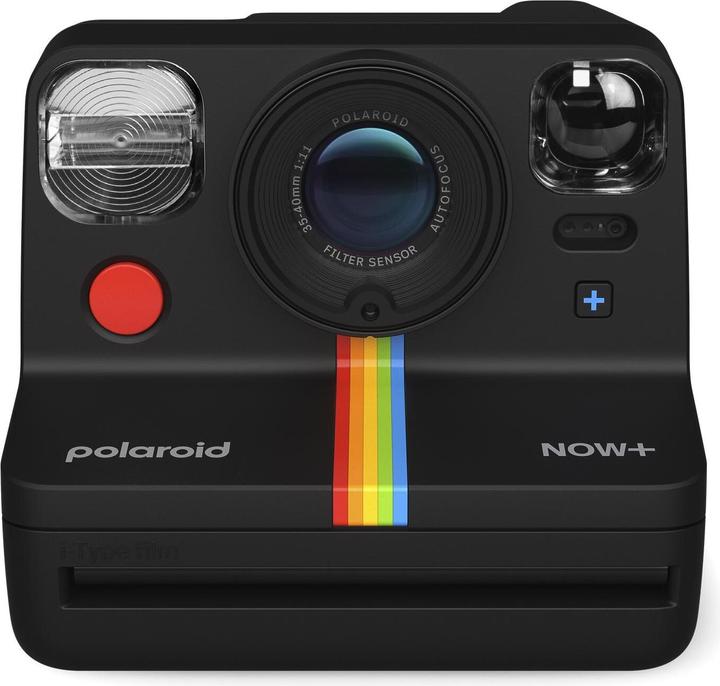
The Polaroid I-2 is disproportionately expensive
The I-2 is the best of all Polaroid cameras, but the price premium is disproportionate to the value added. This is what emerged from the comparison with the cheaper Polaroid Now Gen 2.0.
Michelle and I spent an afternoon testing two Polaroids. One is the new and expensive Polaroid I-2 and the other is the much cheaper Polaroid Now Gen 2.0. We wanted to know if the I-2 is worth the extra price.
We test Polaroid cameras as beginners. I know about photography, but not the details of Polaroids. Michelle has experience with Instax Mini cameras and printers, but not with the Polaroid.
Michelle has experience with Instax Mini cameras and printers, but not with the Polaroid.
For us beginners, it was clear that afternoon that the I-2 is not worth it. It is better in many details, but we could hardly benefit from it. If you simply want to take a snapshot, it is better to opt for the cheap model.
The differences in theory and practice
Here are the advantages of the Polaroid I-2 over the affordable Now Gen 2.0:
- Better lens: the speed of f/8 is one f-stop faster than that of f/11.
The aperture and/or aperture and/or aperture speed of f/8 is one f-stop faster than that of f/11.- The aperture and/or shutter speed can be set manually.
- The I-2 can be controlled via a smartphone application.
- Information screen: aperture, shutter speed, battery level and number of images remaining are displayed. With Now Gen 2, you only see the number of images remaining.
The information screen.- It has a tripod thread, so it can be mounted on a normal tripod.
- The viewfinder is larger and displays the shooting parameters.
- Multiple exposures with three or four images are possible. The Now Gen 2 can only perform single or double exposures.
- The viewfinder is larger and displays shooting parameters with three or four images.
- The lens is equipped with a thread for coloured or grey filters.
However, these advantages have not served us well.
- The screen is difficult to read in sunlight.
The screen is difficult to read in sunlight.
- The aperture selection, in combination with the longer focal length, makes it possible to take pictures with a blurred background. With the Polaroid Now this is practically not possible. The combination possibilities are modest, however, because f/8 still has a rather large depth of field. And even at f/8 there has to be enough brightness to be able to take pictures without flash.
The choice of shutter speed is not easy. - The choice of exposure time does not help us much. The fastest shutter speed is 1/250 of a second. Digital cameras can achieve at least 1/4000 of a second. Fast movements such as water can therefore not be captured by the Polaroid I-2.
The Polaroid I-2's exposure time is not very fast. - Long exposures are difficult to handle. Since the ISO sensitivity is set at 640, it is not possible to make an exposure in sunlight for even one second. To do this, a grey filter is required.
- Triple or quadruple exposures are even more difficult for us. We would probably have to try several scenes and resort to many films until we find something that works well. Our idea was obviously not so brilliant. Since the whole system is analogue, it is difficult to estimate the result in advance and it is easy to waste film with every wrong shot. A film pack has only eight frames, produces a lot of waste and is expensive.
The image quality with the I-2 is generally not superior to that of the Polaroid Now+ Gen 2.0. For portraits it has an advantage: the framing is better for faces and the background is more blurred. Ultimately, however, Polaroid films have some limitations and do not come close to the quality of today's digital cameras. This has a certain appeal, but that is not why the camera has to be so expensive.

Source: Michelle Brändle/David Lee

Source: David Lee
Out of competition: SX-70
From Ramon we received a 1970s Polaroid SX-70 for comparison. It has no flash or autofocus, so it is even more difficult to take pictures with it. Moreover, it relies on film cartridges with a built-in battery, which is even more harmful to the environment than film already is. But the locking mechanism is so cool that for me it makes up for all the disadvantages. For me, the SX-70 is the winner of the secret test - out of competition, because it is no longer available.
The Now+ can do many things that the I-2 also does
An addition to the video that is absolutely necessary: the Polaroid Now+ Gen 2.0 is a better camera than the Now Gen 2.0 we tested. For Italian subtitles, click on the settings icon and select «Auto-translate» under «Subtitles». Like the I-2, you can connect it to the app and mount coloured filters. It also has a tripod thread. This brings it closer to the I-2, but at a much lower price. It is my favourite model and my advice: if you want a Polaroid, then get this one.
My interest in IT and writing landed me in tech journalism early on (2000). I want to know how we can use technology without being used. Outside of the office, I’m a keen musician who makes up for lacking talent with excessive enthusiasm.




